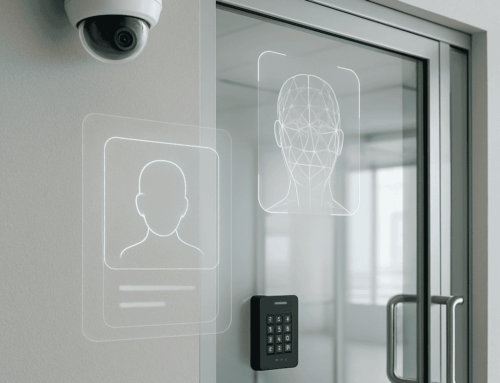How To Create An Access Control Policy In 2022

Your organizations should make protecting your data a top priority. Data is an asset and can be used to enhance your business or to damage your business, usually by hackers or other malicious actors. Creating an access control policy will help you manage your data and limit who can access information and when they can access it.
Access control models often are often multi-tiered, with increasing restrictions at higher levels. Before you invest in an access control system or finalize your access control model and policies, you should analyze how your business operates and where controlled access is the most needed.
What Is An Access Control Policy
An access control policy contains a set of requirements that control access to digital and physical information. It determines who can access specific information, at what time, and under what circumstances. The policy helps set expectations for employees and provides a clear framework for enforcing the policy when someone violates the policy.
While you may decide to create a high-level policy that addresses general rules across your organization, you will also need specific policies that cover different physical spaces and types of information. Security breaches can by physical or virtual. The best access control policies help you maintain confidentiality and integrity while helping your organiation operate efficiently.
What To Include In An Access Control Policy Document
Access control policy and procedures vary in complexity per organizational needs, but there are common components. You should aim to clearly define the role of personnel in determining, granting, ensuring, documenting, and auditing access.
Here are some other significant elements of these policies:
Definition of What Type of Access You Will Grant
The first step is identifying the various types of access suitable for your organization and the sensitivity of the information scenario deals with. You have the following options:
- Discretionary access control where the owner of data decides which personnel to grant access to their objects to.
- A non-discretionary, mandatory access control, where a central authority regulates information access.
- A role-based access control model, where data access is granted based on the roles of individuals within the organization.
- Dynamic, rule-based data access which can be updated to accommodate different times, events, etc.
Policy Around Passwords
User credentials, including username and password rules are a basic form of access control. Your policy should spell out the rules for acceptable passwords and the framework for managing users.
It should involve setting minimum password lengths and special character requirements, two-factor authentication, and prompts asking users to replace their passwords after a pre-detemined interval. Passwords with a minimum of eight digits, mixed case alphanumeric characters, and special symbols are a good starting point. Longers passphrases and multi-factor authentication can add significant layers of difficulty for cyber-attackers.
Physical Access Policy
Physical access policies rely on permissions for accessing office rooms like data storage areas, server rooms, etc. As the access levels required for different spaces within office premises vary, the physical access control policy will determine what rooms are open to which employees. For example, IT workers should be the primary group with access to server rooms — but there may be exceptions certain executives, auditors, or janitorial staff.
Digital Access Policy
This policy defines the rules for access to company network systems, applications, and servers. Policies regarding cloud computing, remote access, information systems access, etc., should all a part of the digital access policy.
Device Policy
A device policy includes who has access to company devices, how such devices can be used, and the networks they can be connected to. It should also include how employees handle their personal electronic devices in the workplace or with company-owned networks.
Four Types of Access Control Models
Access control models are based on certain sets of policies that vary in their restrictiveness. The main types of access control models are:
Mandatory Access Control
Mandatory access control policies are regulated by a central system. These come with strict, preprogrammed parameters and limit access only to the system’s owner. The stringency of mandatory access control makes it the most restrictive access control model, reserved for highly sensitive systems held by enterprises and government organizations.
Role-Based Access Control
Role-based access control assign individual access based upon their role in the organization. The system administrator grants access to people based on the amount and kind of information they would need to perform their duties. The administrator should also compile an access control list that determines the levels of access for each employee — limiting or preventing one-time access. For example, a role-based physical access control policy can be set to grant managers access to certain sensitive areas of an office building while denying entry to junior employees.
Discretionary Access Control
Under discretionary access control, users themselves can grant and limit permissions to other users accessing their objects. These models do not require central administrators and are very flexible.
Rule-Based Access Control
This access control model works based on dynamic rules set forth by the system administrator. For example, access can be granted and limited at certain times of the day, or during certain events, making this a highly customizable approach.
Access Control Policy Examples
If you want to work from a template when creating your access control policies, here are a few examples you can refer to:
About i.e.Smart Systems
i.e.Smart Systems is a Houston, TX based technology integration partner that specializes in design and installation of audio/visual technology and structured cabling. For more than three decades, our team of in-house experts has partnered with business owners, architectural firms, general contractors, construction managers, real estate developers, and designers in the Houston market, to deliver reliable, scalable solutions that align with their unique goals.




